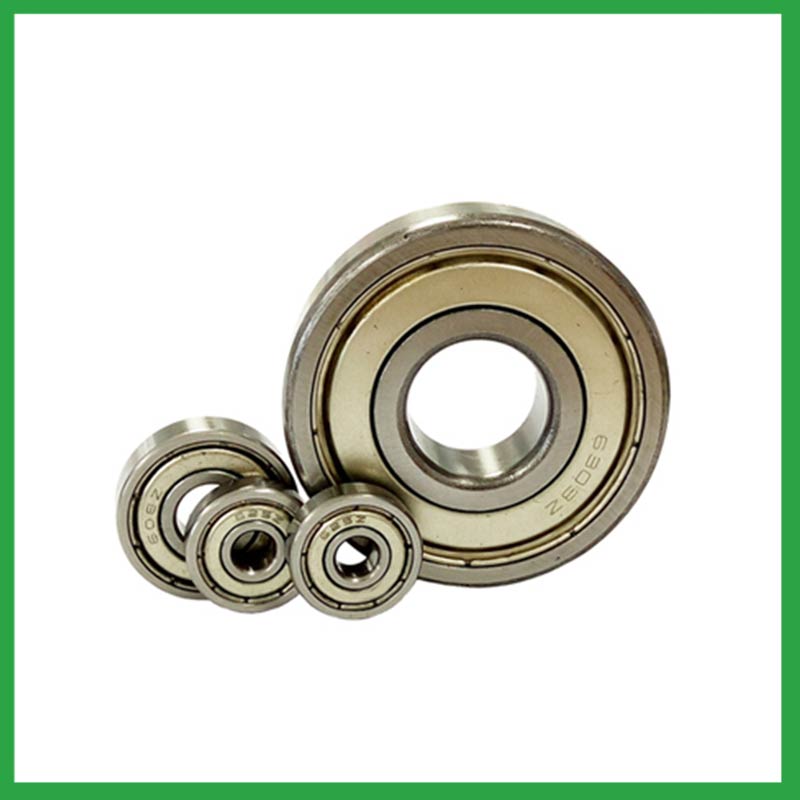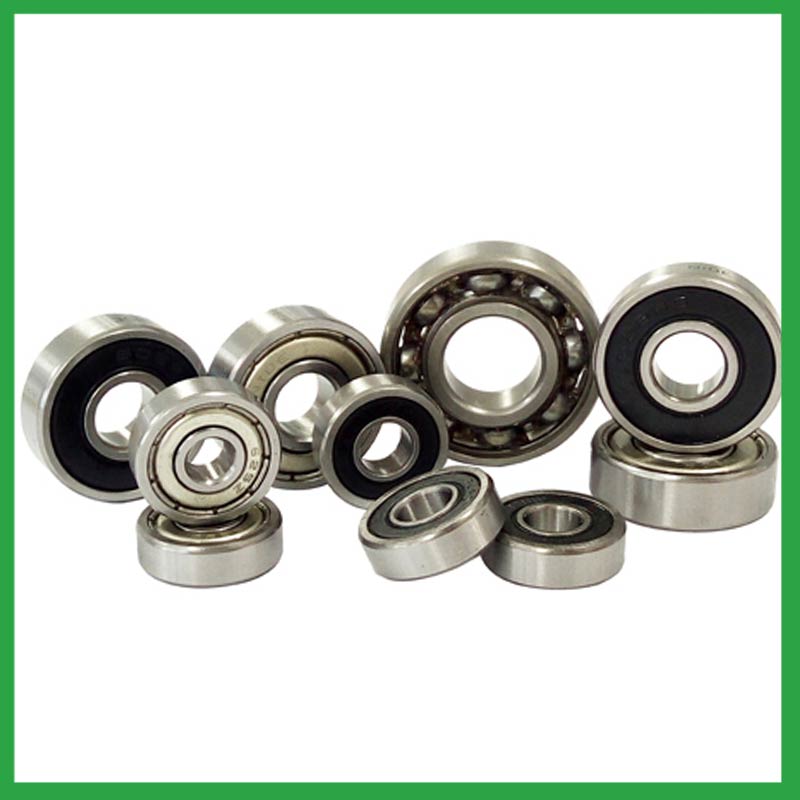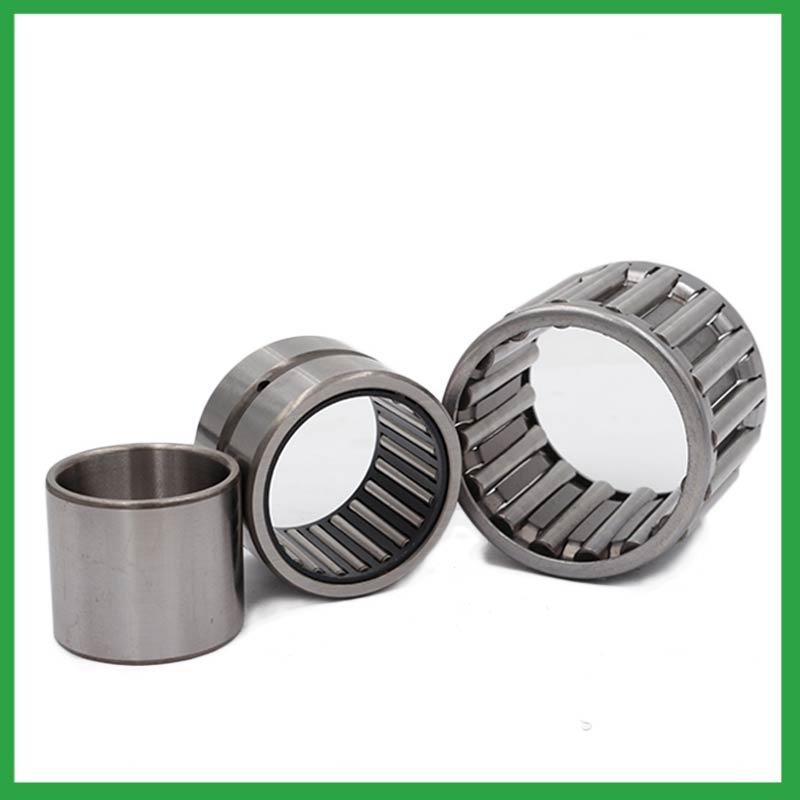PRODUCTS
CONTACT US
Ningbo Nide International Co., Ltd.
一一
· Contact person:Jack Zeng
· Mob/Whatspp/WeChat:0086-13738869026
· Email:emarketing@nide-group.com;marketing4@nide-group.com
· Add:No. 169, Wohushan Road, Daqi Subdistrict, Beilun District, Ningbo, China

Nide team could manufacture ball bearing as per customer’s drawing and samples.
If customer only has samples, we could also design drawing fo r our customer.
We also provide customized service.
Our ball bearing is widely applied the different industrials.
Ningbo Haishu Nide International Co., Ltd is a leading bearing manufacturing and trading company committed to providing high-quality and reliable bearing products and excellent services to global customers. Product scope: We offer motor cover and lamination,thermal protector,magnet,insulation paper,commutator,shaft,ball bearing, etc. We also offer customized bearing solutions to meet specific customer requirements and applications. Quality control: We attach great importance to product quality, adhere to international standards and strict quality control processes. Our production facilities are equipped with the most advanced equipment and technology, and our bearings undergo strict testing and inspection to ensure they meet the highest quality standards.
We have obtained ISO9001 certification to ensure consistent quality throughout the entire product line. We strive to ship on time and flexibly process orders to ensure a seamless experience for our esteemed customers. As an international trading company, we cater to global customers. Our products are exported to various countries and regions, and we have established strong partnerships with reliable international logistics companies.

| Parameter | Information |
| Product Name | fletch ball bearing scene |
| Brand Name | Nide |
| Place of Origin | Ningbo,China |
| Type | Ball |
| Material | ceramics, etc. |
| Sample | Avaible |
| Warranty | 3months-1year |
| Lubrication | Dry/ Oil |
| Application | fan electric motor,small rotary motors, etc. |
| Port | Ningbo/Shanghai |
| Size(mm) | customize |
| Export Country | Argentina,Brazil,South Korea,Lesotho,Bangladesh,Niue,Pakistan...etc |
| Export region | Europe,Oceania,America... |
| Certification | ISO 9001 Certification,CE-stator coil winding inserting machine,CE-stator coil lacing machine,etc |
| Precision Rating | as per customer's requirement |
| Feature | Low Noise,Simple structure...etc |
| Packaging Details | Suitable for sea transportation |
| Color | Silver gray+customized |
| Seals Type | Rubber seals |
| Service | Prompt Delivery |
| Supply Ability | 100000-500000 Piece/Pieces per Month |
| Lead time (days) | 15-20 (To be negotiated) |
Please note: The above table data is for reference only. For specific information, please contact us.
fletch ball bearing scene can be used in household appliances, such as mixers,upper and lower pressure rods,refrigerator door leaf wings,washing machines, etc; It can also be used in industrial fields, such as bearing cabinets,weighing machines,dishwashers,motors, etc.
During the installation process, pollution from dirt and wear media should be prevented;
Temperature and humidity should be controlled to avoid excessive temperatures during startup and operation;
It should be operated and lubricated in the correct reverse direction to avoid unnecessary damage.
Ball bearings have many advantages, making them highly competitive in the market.
Firstly, they are very durable and have good wear performance, making their service life longer than many other types of bearings.
Secondly, they are easy to install and can provide low friction performance in various applications.
Thirdly, they require a relatively low level of maintenance, making them cost-effective.
In addition, compared to many other types of bearings, their purchase cost is relatively low, making them an economical choice.




fletch ball bearing scene---FAQs Guide
2.What is the load distribution within a fletch ball bearing scene, and how does it vary between different bearing configurations?
3.Can fletch ball bearing scene handle shock loads and high-impact conditions in heavy machinery?
4.Can fletch ball bearing scene operate in high-speed applications, and what design features make them suitable for such conditions?
5.How do manufacturers address concerns related to bearing noise and vibration in sensitive equipment?
6.Are there ongoing research and development efforts aimed at improving fletch ball bearing scene materials, designs, and lubrication techniques?
7.Can fletch ball bearing scene be customized with special coatings or treatments to meet specific industry standards or regulatory requirements?
8.Are there fletch ball bearing scene designed for extreme temperature environments, such as cryogenic or furnace applications?
9.How do manufacturers ensure the quality and reliability of fletch ball bearing scene through material selection and precision machining?
10.Are there self-aligning fletch ball bearing scene that accommodate misalignment and shaft deflection in rotating equipment?
11.Are there ceramic fletch ball bearing scene designed for specific applications requiring high-temperature or corrosion resistance?
12.How do sealed fletch ball bearing scene prevent the ingress of contaminants and extend the bearing's service life?
1.What is a ball bearing?
A ball bearing is a type of rolling-element bearing that uses balls to maintain the separation between the bearing races.
The purpose of a ball bearing is to reduce rotational friction and support radial and axial loads. It achieves this by using at least two races to contain the balls and transmit the loads through the balls. In most applications, one race is stationary and the other is attached to the rotating assembly (e.g., a hub or shaft). As one of the bearing races rotates it causes the balls to rotate as well. Because the balls are rolling they have a much lower coefficient of friction than if two flat surfaces were sliding against each other.
Ball bearings tend to have lower load capacity for their size than other kinds of rolling-element bearings due to the smaller contact area between the balls and races. However, they can tolerate some misalignment of the inner and outer races.
2.What is the load distribution within a fletch ball bearing scene, and how does it vary between different bearing configurations?
The load distribution between the rolling elements and raceway is crucial in performance evaluation of rolling element bearings. Determine the load distribution by measuring the strain response at the bearing surface with a notched housing. Finite element analysis shows that the introduction of notches does not affect the load distribution. An experimental system was developed to investigate the load distribution in a cylindrical roller bearing. The experimental static load distribution agrees well with the theoretical calculation. The dynamic load at specific position of load zone reflects the manufacture difference among rollers and dynamic balance of distributing loads.
3.Can fletch ball bearing scene handle shock loads and high-impact conditions in heavy machinery?
As a general rule, fletch ball bearing scene are used at higher speeds and lighter loads than are roller bearings. Roller bearings perform better under shock and impact loading. Ball bearings tolerate misalignment better than roller bearings do. Roller bearings can handle heavy combined radial and thrust loads.
4.Can fletch ball bearing scene operate in high-speed applications, and what design features make them suitable for such conditions?
They have very low rolling friction and are optimized for low noise and low vibration. This makes them ideal for high-speed applications. fletch ball bearing scene are comparatively easy to install and require minimal maintenance.
5.How do manufacturers address concerns related to bearing noise and vibration in sensitive equipment?
From a fletch ball bearing scene manufacturing perspective, a low noise or vibration rating is achieved by paying attention to the surface finish of the raceways and balls, their roundness, and selecting the correct cage design. Finely filtered low noise greases can also be used to reduce vibrations.

6.Are there ongoing research and development efforts aimed at improving fletch ball bearing scene materials, designs, and lubrication techniques?
A custom fletch ball bearing scene can satisfy almost any customer’s needs. Your application may need a needle roller or ball bearing, a radial or angular contact design, a plain carbon steel bearing with anti-corrosion coatings or stainless steel, a thrust bearing or a spherical bearing, tight or loose radial play, sealed or non-sealed designs
7.Can fletch ball bearing scene be customized with special coatings or treatments to meet specific industry standards or regulatory requirements?
Yes, fletch ball bearing scene can be customized with special coatings or treatments to meet specific industry standards or regulatory requirements.
1. Corrosion-resistant coatings: These coatings are used to protect the bearings from corrosion caused by exposure to moisture, chemicals, and other corrosive substances.
2. High-temperature coatings: These coatings are used to improve the thermal stability and performance of bearings in high-temperature environments.
3. Food-grade coatings: These coatings are specially designed for applications in the food and beverage industry, where bearings come into contact with food, beverage, or pharmaceutical products.
4. Anti-static and non-conductive coatings: These coatings are used to dissipate static electricity, which can cause damage to electronic components.
5. Specialized lubrication treatments: Bearings can be treated with specialized lubricants that meet specific industry standards or regulatory requirements.
8.Are there fletch ball bearing scene designed for extreme temperature environments, such as cryogenic or furnace applications?
High temperature fletch ball bearing scene use specialized lubricants to stand up to high temperatures. Grease-packed bearings are pre-filled with fluorine grease for high temperatures, while YS and SJ bearings use molybdenum disulfide (MoS2) solid lubricant to withstand temperatures up to 350°C and 400°C respectively.
9.How do manufacturers ensure the quality and reliability of fletch ball bearing scene through material selection and precision machining?
High-precision measuring instruments, such as micrometers and gauges, are used to check the dimensions of the rings and balls to ensure they meet tight tolerances. Surface Finish Inspection: Surface finish is assessed using profilometers to ensure the required smoothness and low friction characteristics.
10.Are there self-aligning fletch ball bearing scene that accommodate misalignment and shaft deflection in rotating equipment?
These fletch ball bearing scene are particularly suitable for applications where misalignment can arise from errors in mounting or shaft deflection. A variety of designs are available with cylindrical and taper bores, with seals and adapter sleeves and extended inner rings.

11.Are there ceramic fletch ball bearing scene designed for specific applications requiring high-temperature or corrosion resistance?
Ceramic fletch ball bearing scene are a special type of bearing made of ceramic materials, offering superior wear resistance, corrosion resistance, and high-temperature performance. They provide excellent performance in applications requiring high speeds, high temperatures, and resistance to corrosion.
12.How do sealed fletch ball bearing scene prevent the ingress of contaminants and extend the bearing's service life?
Contact seals are a type of seal where the sealing lip physically touches the inner raceway of the fletch ball bearing scene. They create a narrow line or zone of contact that forms a barrier to prevent the escape of lubricants and the ingress of contaminants. Because the seal keeps dirt and other contaminants out, it can offer a longer operating life of the bearing or prevent premature bearing failure. Sealed bearings can be considered lubricated for life, which eliminates the need for a relubrication process.

